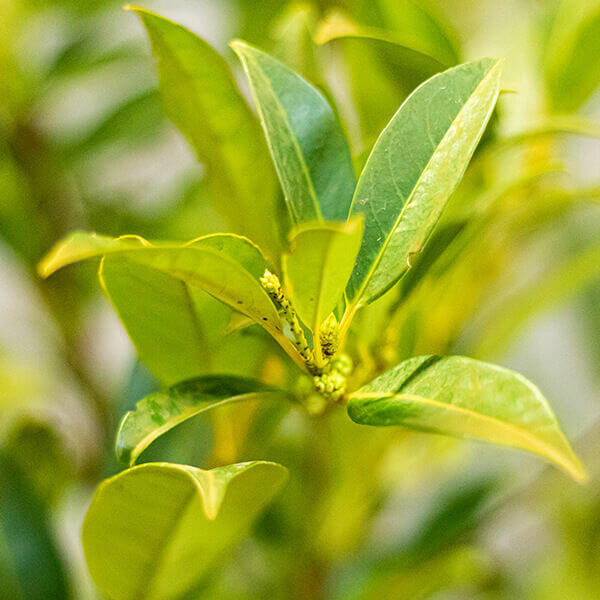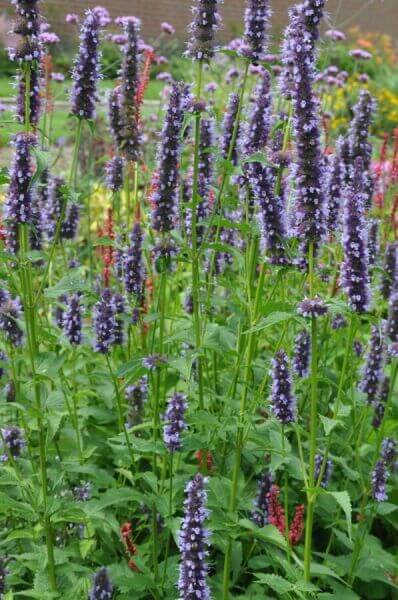Hedge Plants For Privacy Screens
Hedge Plants For Privacy Screens
Blog Article
Best Hedging Plants For Informal Borders
Boost your garden's allure with rich hedge varieties such as Yew (Taxus), Thuja, Laurel, Photinia, and Bamboo, celebrated for their structural stability and ecological benefits.
Yew and Thuja provide evergreen coverage and winter strength, while Laurel offers rapid growth and broad, fragrant leaves.
Photinia includes seasonal charm with its dynamic red foliage, and Bamboo provides a low-maintenance, peaceful atmosphere.
These hedges enhance air quality, lower noise, and develop tranquil, private areas.
Proper planting, spacing, and upkeep make sure vigorous development and ecological harmony.
Explore how these lavish ranges can elevate your garden's beauty and well-being.
Key Takeaways
Transform Your Garden With Lush Hedge Ranges
- Select Yew for its dense, evergreen growth and unequaled longevity.
- Opt for Laurel for its fast development and broad leaves, guaranteeing fast personal privacy.
- Choose Photinia for its lively seasonal foliage, which turns a striking dark red.
- Make use of Bamboo for a low-maintenance, winter-hardy hedge with visual appeal.
- Space plants 2-3 per meter and prune regularly for optimum growth and health.
Popular Hedge Plants
When transforming a garden with lush hedge varieties, it's necessary to think about popular hedge plants such as Yew, Thuja, Laurel, and Photinia due to their distinct attributes and advantages.
Yew (Taxus) is extremely esteemed for its longevity and dense, green growth, making it a prime choice for enduring landscapes.
Thuja is noted for its evergreen foliage and robust winter season strength.
Photinia adds seasonal vibrancy with red leaves that darken in time, producing dynamic visual appeal.
Laurel offers rapid growth and aromatic, broad leaves, perfect for quick privacy.
Additionally, Bamboo is an outstanding choice for atmosphere, using a low-maintenance, winter-hardy choice that enhances the garden's aesthetic with its classy, swaying walking canes.
These selections cater to a range of horticultural requirements and preferences.
Advantages of Garden Hedges
Garden hedges provide a wide range of benefits, making them an important addition to any landscape. These natural barriers are affordable to implement and offer significant wind defense, improving air circulation and adding to noise decrease. The dense foliage of hedges like Thuja and Beech makes sure privacy by blocking visibility, producing a secluded and peaceful environment.
Hedges likewise play an important function in microclimate regulation, supplying a stable environment that promotes plant development and reduces temperature level fluctuations. Their elaborate leaf structures filter toxins, improving air quality and adding to a much healthier garden ecosystem.
Furthermore, hedges stand out in noise reduction, taking in and deflecting acoustic waves to lower ambient noise levels. This dual performance of offering both visual and acoustic privacy boosts the general serenity and aesthetic appeal of any garden.
Planting and Upkeep Tips
For a successful hedge, careful preparation of the planting area is essential. Make sure the soil has correct pH and drain to support strong root advancement.
Area the plants appropriately for the selected species. Water the hedge often during its preliminary growth phase, adjusting as needed with seasonal changes.
Implement a methodical bug control and disease prevention technique, utilizing chemical or natural treatments when essential. Regularly inspect for aphids, mites, and fungal infections.
Apply mulch to keep wetness and reduce weeds. Seasonal pruning promotes thick growth and air circulation, important for plant health.
Following these standards will help you cultivate a dynamic, properly maintained hedge that boosts the charm of your garden.
Spacing and Trimming Standards
Spacing and Trimming Standards
Proper spacing and trimming are crucial for cultivating healthy, visually appealing hedges. Appropriate spacing guarantees each plant gets sufficient nutrients, light, and airflow.
Follow these guidelines for optimal hedge upkeep:
- Spacing: Position hedge plants 2-3 plants per meter to motivate robust development.
- Pruning Strategies: Routine pruning is vital for preserving preferred hedge height and shape. Trim new growth in summer and cut down older wood throughout winter season.
- Seasonal Care: Adjust trimming schedules and approaches according to seasonal requirements to ensure plant health.
- Hedge Height: Regularly monitor and cut to preserve the desired hedge height and achieve consistent looks.
Sticking to these steps will guarantee your hedge prospers, improving both the appeal and functionality of your garden.
Picking the Right Hedge
Selecting the Right Hedge
Selecting the proper hedge includes assessing elements such as mature height, foliage density, and ecological durability. Successful hedge plant choice requires comprehending each species' growth qualities and site-specific adaptability.
For instance, Yew (Taxus) offers exceptional longevity and thick growth, while Thuja is significant for its winter resilience. In addition, considering upkeep requirements is important; fast-growing types like Laurel or Privet demand routine trimming, whereas low-maintenance alternatives like Bamboo or Ivy might be more effective for those seeking very little upkeep.
Environmental aspects such as soil type, light availability, and wetness conditions should likewise guide the choice procedure. This careful method makes sure the selected hedges will grow, providing both practical and aesthetic advantages to the garden landscape.
Shipment and Planting Guidance
To guarantee your hedge plants grow, they should be delivered by specialized carriers and planted promptly upon arrival.
Follow these important actions for effective planting:
- Soil Preparation: Improve the soil with raw material to improve drain and nutrient content.
- Planting Depth: Develop a trench twice the width and equal to the depth of the root ball.
- Watering Strategies: Water thoroughly after planting, keeping the soil consistently moist however not saturated.
- Mulching: Apply a layer of mulch to keep wetness and reduce weeds.
Client Assistance and Service
Offered the vital role of prompt assistance in horticultural pursuits, our client support group is available six days a week through telephone, e-mail, and social networks to offer professional advice and swiftly attend to any issues. Their dedication to quick reaction times guarantees consumer fulfillment by solving questions connected to plant health, optimum planting approaches, and upkeep schedules.

Action Time
-------------------
Within 24 hours
Within 24 hours
This detailed support group, enhanced by an excellent 9.3/ 10 customer rating, highlights our commitment to improving the gardening experience for each customer.
Regularly Asked Concerns
The Length Of Time Does It Consider Hedge Plants to Develop?
Hedge plants usually need one to 3 years to end up being fully established, with the exact period differing by types and growing conditions.
Reliable care during this crucial period is important for robust growth. Consistent watering, alert weed control, and proper fertilizer application are essential in promoting strong root advancement.
For example, fast-growing species like Laurel may establish quicker, while slower-growing ranges such as Yew might take longer. Persistent maintenance accelerates the facility procedure, resulting in healthy and dense hedges.
What Are the Finest Hedge Plants for Personal Privacy?
The question of the best hedge plants for personal privacy includes assessing evergreen and deciduous options.
Evergreen hedges like Thuja, Laurel, and Cypress supply year-round protection, making sure constant privacy.
In contrast, deciduous hedges such as Beech use seasonal privacy, shedding leaves in colder months.
Secret maintenance tips for personal privacy hedges include regular trimming, fertilizing in spring, and correct spacing-- usually 2 to 3 plants per meter.
In addition, consistent watering and diligent weed elimination are essential for promoting healthy, thick growth.
Can Hedge Plants Attract Wildlife to My Garden?
Yes, hedge plants can draw in wildlife to your garden by providing necessary advantages like shelter, food, and nesting websites, thus improving local biodiversity. Yew, holly, and laurel are outstanding for attracting birds, while ivy supports a variety of pests.
However, it is necessary to note that there are some downsides, such as increased maintenance to handle bugs and regular maintenance. Thoroughly choosing and keeping hedge varieties can help stabilize these downsides and benefits, ultimately cultivating a vibrant and sustainable environment in your garden.
Exist Any Flowering Hedge Plants Available?
Yes, there are flowering hedge plants readily available that can boost the beauty of your garden.
For Browse this site example, Elaeagnus, likewise understood as Olive Willow, produces fragrant white flowers in the fall, adding a touch of beauty.
Photinia, another popular option, showcases lively red leaves that mature into a rich green, creating a dynamic visual impact throughout the seasons.
To guarantee these plants grow, it's vital to practice appropriate pruning methods and seasonal upkeep, such as trimming brand-new development in the summer season and cutting back in the winter.
These measures will help preserve the health and aesthetic appeal of your flowering hedges.
How Do I Prevent Insects in My Hedge Plants?
To prevent pests in hedge plants, utilize natural insect control techniques and preserve appropriate hedge care. Introduce advantageous bugs like ladybugs, which take advantage of hazardous insects, to produce a balanced community.
Routinely examine your hedges for indications of invasion and quickly remove any affected parts to avoid the spread. Guarantee the health of your hedges by applying well balanced fertilizers and supplying sufficient water.
Use mulching to keep soil moisture and correct spacing to lower plant tension and promote robust growth. These practices collectively assist in decreasing insect issues and maintaining a healthy hedge.
Conclusion
In essence, selecting the best hedge varieties such as Yew, Thuja, and Laurel can transform any garden into a tranquil sanctuary. These plants offer year-round greenery, enhance visual appeal, and deal practical benefits like sound reduction and wind protection.
Correct planting methods, accurate spacing, constant watering, and seasonal trimming are essential for ideal growth.
Dependable shipment services and professional customer assistance guarantee a smooth experience from purchase to planting, making it easier than ever to elevate your outside space.
Garden hedges use a wide variety of benefits, making them an important addition to any landscape. These natural barriers are affordable to carry out and provide substantial wind protection, boosting air circulation and contributing to sound reduction. The dense foliage of hedges like Thuja and Beech makes sure privacy by blocking visibility, producing a remote and serene environment.

Pruning Strategies: Routine pruning is vital for maintaining wanted hedge height and shape. Cut new development in summertime and cut back older wood during winter season.
Report this page